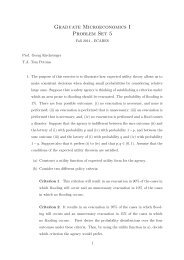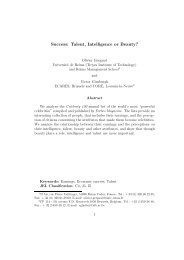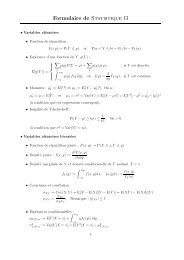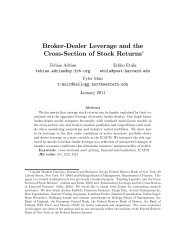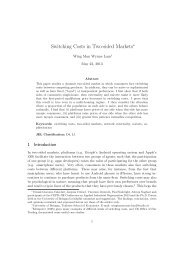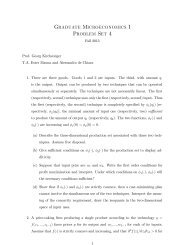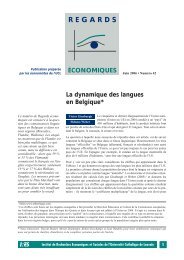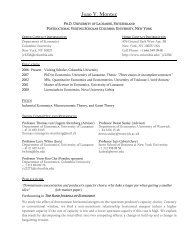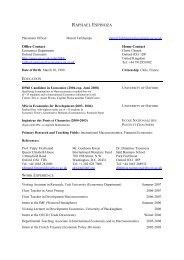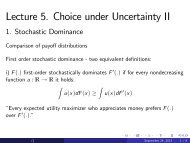HAR volatility modelling with heterogeneous ... - ResearchGate
HAR volatility modelling with heterogeneous ... - ResearchGate
HAR volatility modelling with heterogeneous ... - ResearchGate
You also want an ePaper? Increase the reach of your titles
YUMPU automatically turns print PDFs into web optimized ePapers that Google loves.
coefficients measuring the impact of jumps are decreasing <strong>with</strong> the frequency. This can beeasily interpreted by looking again at Figure 1: the impact of jumps is significant till onemonth, but is decaying much faster than the impact of continuous <strong>volatility</strong> and negativereturns. The fact that negative returns have a similar impact on future <strong>volatility</strong> acrossthe three frequencies signals that the slowly decaying lagged correlation between negativereturns and <strong>volatility</strong> is not only due to the high persistence of <strong>volatility</strong>, but to the highpersistence of leverage effect as well.Figures 4 shows the R 2 for different models at various horizons, and shows unambiguouslythat the inclusion of both the <strong>heterogeneous</strong> jumps and the <strong>heterogeneous</strong> leverageeffects considerably improve the forecasting performance of the S&P 500 <strong>volatility</strong> at anyforecasting horizon. In particular, the inclusion of <strong>heterogeneous</strong> leverage effect providesa relevant overall benefit in the in-sample performance. We test this result out-of-samplein Section 3.4.3.2 Is leverage effect induced by jumps?An open research question is whether, and to which extent, the leverage effect is induced byjumps. In our setting, we investigate this issue by separating the daily jump contributionto quadratic variation in a positive and negative part. To this purpose, we define:J + t = J t ·I {rt>0}J − t = J t ·I {rt



